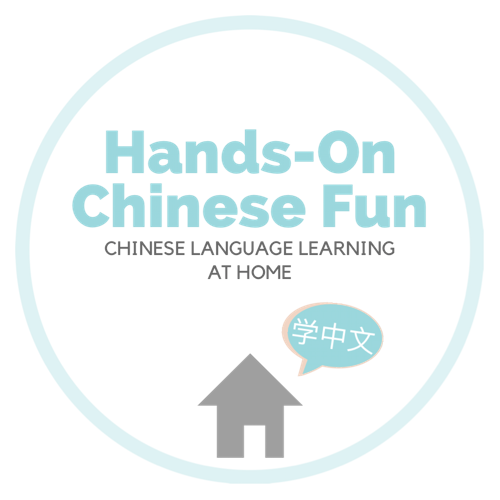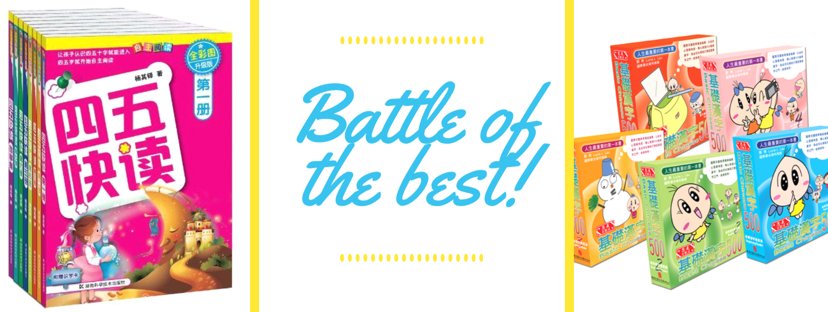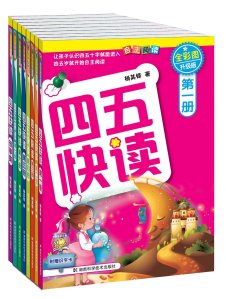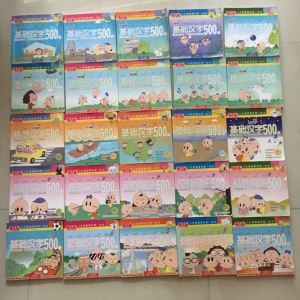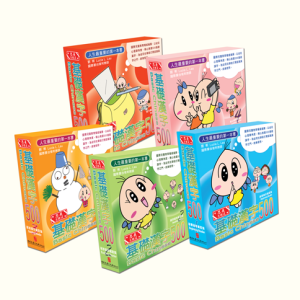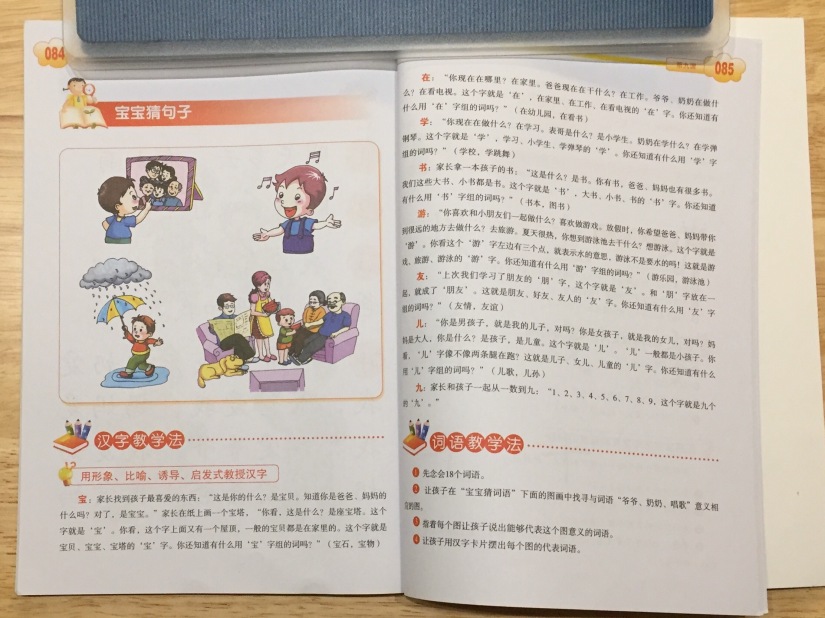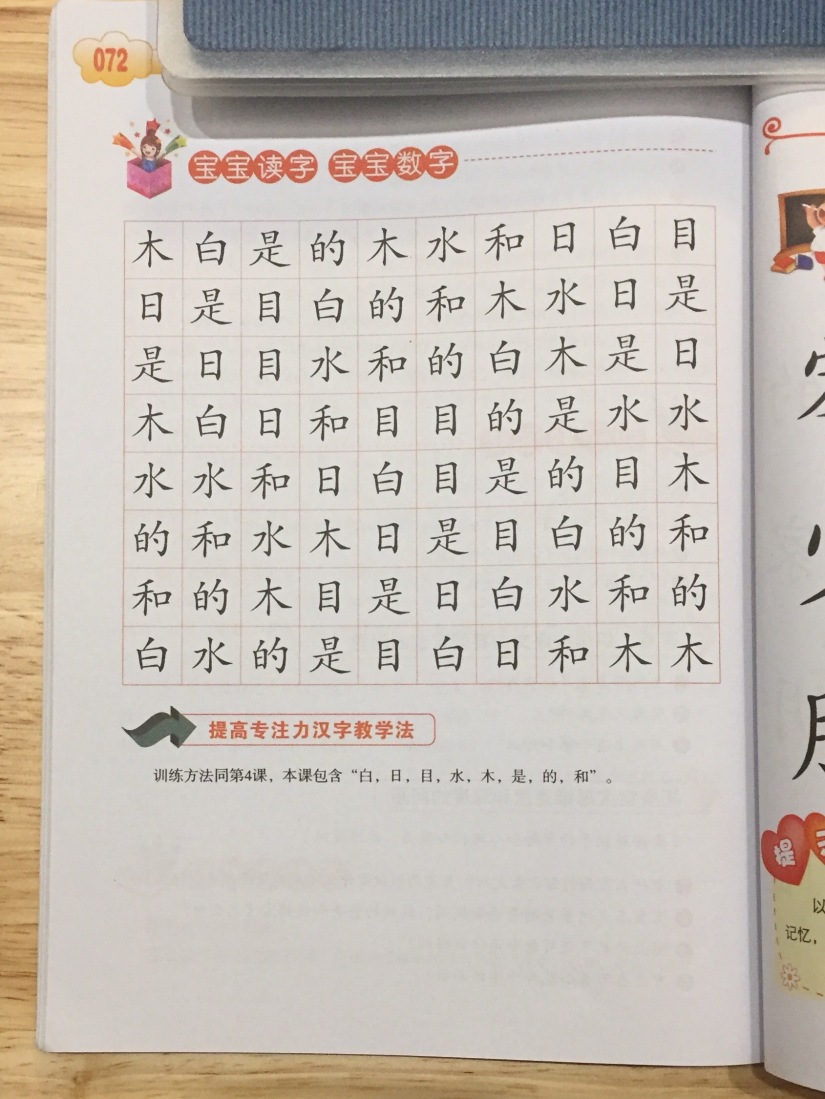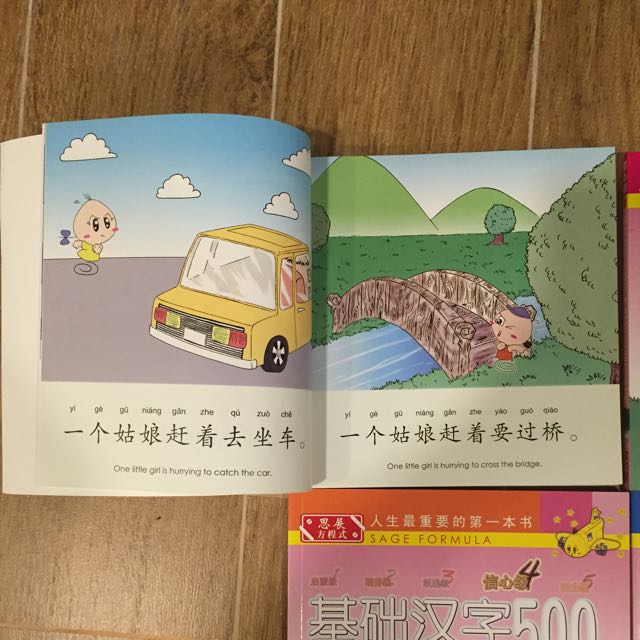As you probably already know, I am a big fan of 四五快读. I have a few other blog posts like how we use it and how I organize our materials, but I wanted to wait until I finished the entire curriculum before I wrote a review.
Anyway, momentous occasion today. We finished all 8 books! YAAAAAYYYYY!!!!!! 😊😊😊
Here’s a general overview of our experience.
Stats
Background: My son grew up in a 100% monolingual American English environment for his first 4.5 years. When we started 四五快读 he barely knew any Chinese and I taught him both the character and meaning at the same time, e.g. “This is 天. It means sky.” When we started Book 1, he didn’t even know what 火, 木, 云 meant!
Time: We started when he was 4 years 10 months old and completed at 5 years 7 months old. It took a total of nine months diligently working on it every day for about 15 mins.
As the name of the series suggests, it is designed for 4-5 year olds. Of course it could be used for younger/older children too, but younger children may not have the attention span and older children might find the animal stories kinda lame.
Cost: I bought the set of 8 books from Taobao for around $25 USD
Outcome: He can now read around 700-800 characters, short stories and simple storybooks. Technically the series covers a total of 825 characters but he has forgotten some of them. For those of you from Singapore, this is basically means he’s covered most of the characters in the P1 syllabus and a substantial portion of P2 (however he cannot write any of them).
Pros
- Cheap
- Comprehensive program – everything is planned out for you and flash cards are included
- Builds up a child’s confidence from reading simple sentences with lots of pictures to long stories with hardly any pictures. THIS IS THE BEST THING ABOUT THIS PROGRAM! It trains kids to not be afraid of long pages of text.
- No pinyin (I guess some people wouldn’t see this as a pro but I do!)
- According to the author, child should be able to read about 80% of the words in children’s books after completing this series. I would say this is pretty accurate.
Cons
- Typos (there are a few every book)
- Printing error!! My Book 5 had like 20 misprinted pages OMG!!!!!!! 🤦♀️
I won’t say that my son loves 四五快读 because that would be a lie. I had to deal with a lot of complaints initially but he is now used to 四五 as part of his daily routine and doesn’t mind it. He is very proud of what he has accomplished and has even brought 四五 to his preschool for Show & Tell!
Some readers mentioned to me that they bought the series but find it so intimidating. I freaked out too and thought there’s no way my kid could learn all that. Here’s a tip: only look at the book you’re on and don’t look ahead! Focus on taking baby steps every day.
Progression from Book 1 to Book 8:
First week (Aug 2017):
Beginning of Book 1 (Aug 2017):
End of Book 1 (Sep 2017):
Book 2 (Oct 2017):
Book 3 (Nov 2017):
Book 5 (Jan 2018):
Book 8 (Apr 2018):
Leisure Reading
During the course of the last few months while doing 四五, I also massively acquired Chinese storybooks and read to him as often as I could. It started with 1-2 picture books a day to now 1-2 hours of Chinese books a day. ME reading, not him.

The impact of this on his language development was HUGE. His Chinese vocabulary and grammar exploded and he became able to read with increased speed and fluency. You will notice in the videos that somewhere along Book 3, he stopped reading character by character and started reading by chunks.
Side Note
Because I did not expose my son to Chinese until 4.5 years old, he has substantial difficulty with pronunciation of tones. I did not take this seriously at first because I thought he would eventually figure it out with time. Well, turns out we got until Book 8 and he STILL did not figure it out by himself and basically sounded horrendous since the stories were now very long. The longer the sentence, the more inaccurate his tones were.
Around the middle of Book 8, I started aggressively correcting his tones using the following strategies:
- Correcting him every single time he makes a mistake
- Listening to lots of CDs/MP3s of native speakers
- Improving my own pronunciation. I’m usually kinda lazy and mumble a lot but I make a conscious effort to pronounce as clearly as I can.
- Having him repeat after me, bit by bit. At first he could only imitate 2-3 characters with the correct tones, but he slowly became able to imitate 4-5 characters then longer sentences accurately.
- Taking a step backwards and reading EASY books. We practiced My First Chinese Words readers which has one repetitive line per book.
- Used the tone marks in pinyin to visualize it (I feel he is a better visual learner than auditory)
After several weeks of my intensive boot camp, he became a lot more conscious of tones and got better at certain combinations which are hard for him (e.g. a lot of fourth tones in a row). Overall I would say he has improved markedly because I only have to correct him about 5 times per story now instead of 5 times per sentence!
Please follow me on Facebook for our latest videos and updates.
Conclusion
I know we still have a long way to go for language, reading and pronunciation, but I think his progress from the first video until now is very evident. 🙂 For those of you just starting this journey, 加油! Persevere and you will see the fruits of your labor very soon.💪🏻💪🏻💪🏻
